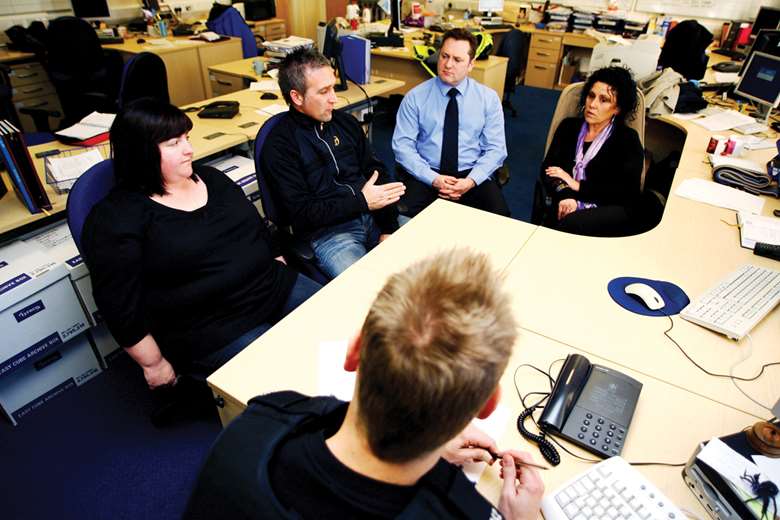Joint inspections: key questions
Neil Puffett
Monday, July 20, 2015
What will the latest proposals for multi-agency safeguarding inspections mean for child protection services?

Following two failed attempts, fresh proposals for assessing how local agencies work together on child protection have gone out for consultation.
The "joint targeted area inspection" is intended to be a shorter, sharper look at how well agencies work together to protect children in a locality and will be targeted on specific areas of safeguarding concern, such as the sexual exploitation of children and young people.
It will be carried out jointly by Ofsted, Her Majesty's Inspectorate of Constabulary (HMIC), Her Majesty's Inspectorate of Probation (HMIP) and the Care Quality Commission (CQC).
Here, we look at what the latest proposals will mean for local authorities and other agencies responsible for safeguarding and child protection.
What will the inspections look at?
The inspections will aim to evaluate the effectiveness of multi-agency work to protect children by children's services departments, local health services, police and probation. To do this, they will look at the multi-agency response to all forms of child abuse and neglect at the point of identification or referral.
In addition to this, inspectors will rate the quality and impact of assessments and decisions resulting from referrals.
Meanwhile, there will be a "deep-dive" investigation into the experiences of a small number of children and young people. For the period between October 2015 (when the inspections start) and March 2016, the four inspectorates want the deep dive to focus on two specific groups of young people - those at risk of child sexual exploitation, and those missing from home, school or care.
From April 2016, deep dives will focus on other groups of young people such as those at risk of domestic violence, girls at risk of female genital mutilation or older children at risk of abuse.
Lisa Pascoe, deputy director of social care policy at Ofsted, says it is the limited scope of the inspections that differentiates it from previous proposals for inspections of multi-agency working.
She says: "The first plans were around multi-agency child protection inspections and local authorities felt that they were too broad in scope and were also concerned that we would be making graded judgments."
How will the inspections work?
A team of 11 inspectors, three of whom are from Ofsted, will spend a total of five days in local areas in a single Monday to Friday period looking at a wide range of safeguarding services, with agencies getting eight working days' notice of a visit.
During the notice period, inspectors will identify a small number of cases on which to conduct a deep dive, and the local area will be asked to undertake a joint audit of the quality, impact and effectiveness of the practice.
Pascoe says only six inspections will be conducted in the first six months after the framework is launched. "We will be targeting them in areas where we think there might be a concern and also areas where we think there may be good practice to disseminate."
She says they will not represent a significant burden for those being inspected.
"We are consulting to get a sense from the sector of what they feel is realistic," she says. "We know that inspections start really well when we have a view from the local authority about their own procedure and share it with us. It gives us the chance to test it out."
Will areas be handed a graded judgment for their work?
No. The inspectorates will publish a letter to the chair of the local safeguarding children board and the senior leaders responsible for the agencies inspected, which will feature a narrative judgment.
The letter will run through the key findings of the inspection, setting out key strengths and recommendations for either the entire local partnership, or for specific agencies. It will set out what needs to improve and where the partnership needs to focus its attention.
The consultation calls for views on whether recommendations should be presented as a single list without any indication of priority, or whether they should be split into "areas for urgent action" and "areas for improvement".
Who will make sure improvements are made?
Monitoring of improvements against recommendations will be conducted by the individual inspectorates in relation to the respective agency they are responsible for. In the case of local authorities, Pascoe says if serious concerns are uncovered, it could prompt a full inspection of child protection arrangements under the single inspection framework.
"If we were sufficiently concerned, we would notify the Department for Education," Pascoe says. "But that's not our intention. We want to identify areas where local authorities can do things better and highlight best practice."
AT-A-GLANCE GUIDE TO JOINT INSPECTIONS
- Inspections will start in October
- 11 inspectors from Ofsted, CQC, HMIP and HMIC will be involved in each area inspection
- Six areas will be inspected up until March 2016 - not all will be deemed to be struggling with safeguarding services
- They will look at "front door" arrangements, case assessments and undertake thematic reviews of services for different groups
- Judgments will be narrative, not graded, and include findings from all agencies
Source: Joint targeted area inspection consultation




